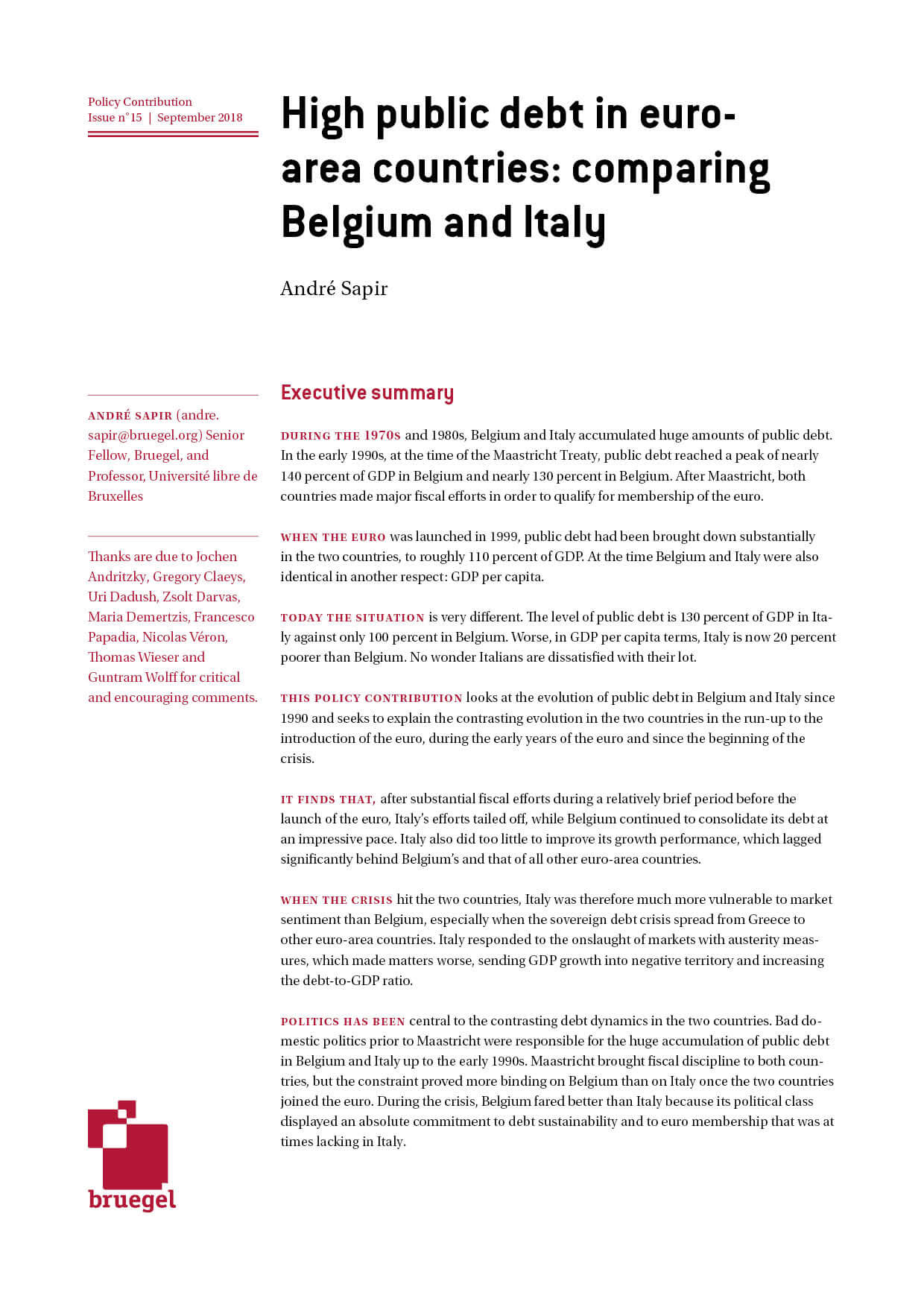Past Event

The role of the ECB in stabilizing sovereign debt markets
What are the main lessons of ECB interventions in specific sovereign debt markets?
Past Event

What are the main lessons of ECB interventions in specific sovereign debt markets?
Blog Post

If not handled correctly, the European Union’s transition to take on a new role as an issuer of public debt risks crowding out existing markets. Managing that transition correctly is almost as big a challenge as spending the money itself.
Policy Contribution


The European Central Bank’s November 2019 Financial Stability Review highlighted the risks to growth in an environment of global uncertainty. On the whole, the ECB report is comprehensive and covers the main risks to euro-area financial stability, we highlight issues that deserve more attention.
Blog Post

DSA applies to crisis countries only, but an early warning system identifying vulnerabilities is relevant for all countries. A more general, less stringent, debt vulnerabilities analysis (DVA) could be used to assess countries’ debt management policies and identify vulnerabilities, without leading immediately to policy consequences. A more general framework could also incorporate political risks that are significant determinants of debt dynamics
Blog Post

Longer-term yields falling below shorter-term yields have historically preceded recessions. Last week, the US 10-year yield was 21 basis points below the 3-month yield, a feat last seen during the summer of 2007. Is the current yield curve a trustworthy barometer for future growth?
Blog Post


The authors map how much fiscal debt is in the hands of domestic and foreign holders in the euro area. While the market for debt was much more international prior to the crisis, this trend has since been reversed. At the same time, central banks have become important holders of fiscal debt.
Blog Post

Bruegel’s updated data set of sovereign bond holdings illustrates how a rising share of Italian debt is held by domestic investors – a development with particularly significant implications, in the context of the Italian government’s disagreement with the European Commission over spending plans outlined in its draft budget.
Blog Post


The increase in the spread between Italian (BTP) and German (Bund) government securities is directly an additional burden for Italy public finance, and thus for tax payers. But it could soon also become a burden for the real economy, as the increased yield on Italian government securities could pull up the cost of bank loans for Italian firms, thus imparting a deflationary impact onto the economy.
Policy Contribution

This Policy Contribution looks at the evolution of public debt in Belgium and Italy since 1990 and uses the debt dynamics equation to explain the contrasting evolution in the two countries in the run-up to the introduction of the euro, during the early years of the euro and since the beginning of the crisis, arguing that the euro could have been used also by Italy to undertake sufficiently large fiscal adjustment.
Opinion


The ECB should refine its collateral framework in order to continue protecting its balance sheet without putting at risk the safe-asset status of sovereign bonds of the euro area.
Blog Post


Central banks’ collateral frameworks play an important role in defining what is considered as a safe asset. However, the ECB’s framework is unsatisfactory because it is overly reliant on pro-cyclical ratings from credit rating agencies, and because the differences in haircuts between the different ECB credit quality steps are not sufficiently gradual. In this note, the authors propose how the ECB could solve these problems and improve its collateral framework to protect its balance sheet without putting at risk the safe status of sovereign bonds of the euro area.
Blog Post

The European Commission is pushing to create a synthetic euro-area-wide safe asset in the form of sovereign bond-backed securities (SBBS). However, SBBS do not fully fulfil their original promises. If introduced on a massive scale, they might increase the supply of safe assets in good times and loosen the link between sovereigns and banks. But they will not give governments a means to maintain market access during crises, they might change incentives for governments to default, and they could pose a problem to individual bonds not included in SBBS if, in the end, they are put at a regulatory advantage vis-à-vis individual bonds.